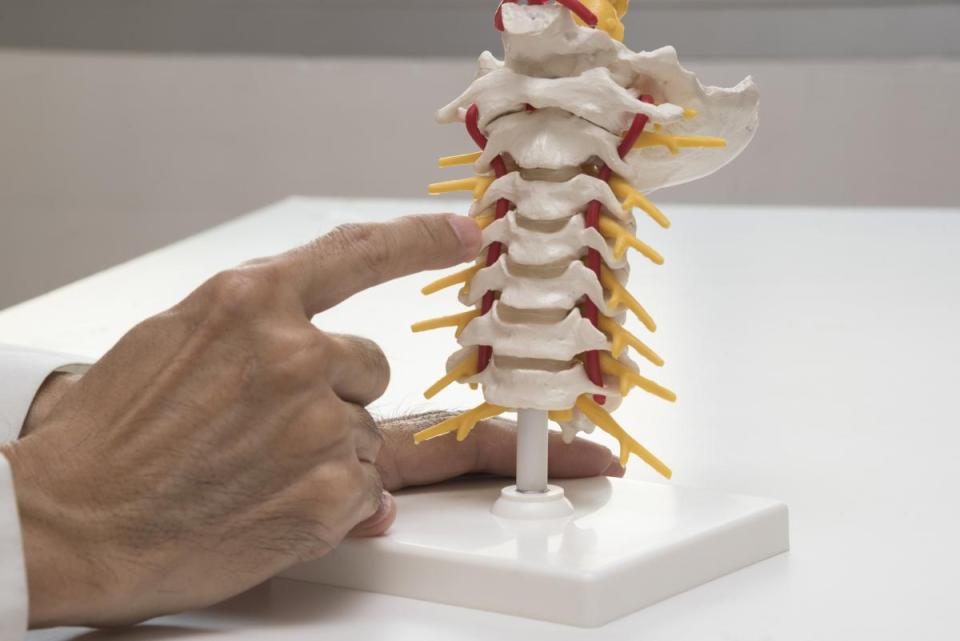Spinal disc problems
Diagnosis
First, your doctor will take a thorough history and perform a comprehensive physical exam to determine the cause of your pain. Next, you may undergo an MRI to get an “inside” look at the problem area.
Treatment
There are several options in treating a herniated disc, depending on the location and severity of your injury. Generally, the injury will get better with time and conservative treatment. Non-surgical treatment options include:
- Relative rest
- Ice
- Medications, such as anti-inflammatory and muscle relaxers
- Physical therapy
If all above fail, lumbar epidural steroid injections may be considered.
Degenerative disc disease
One of the most common causes of lower back and neck pain, degenerative disc disease is a result of changes or a breakdown of your spinal discs. As you age, tiny cracks can evolve or fluid can be lost, resulting in disc degeneration over time.
Symptoms
- Back or neck pain
- Pain can worsen with certain movements, such as reaching up or bending down
- May start gradually and build over time
- Less pain with walking, running or lying down
Diagnosis
Because symptoms usually develop gradually and can mimic other problems, it can be tricky to diagnose degenerative disc disease. After taking a detailed history, your doctor will perform both a physical and neurological exam. You may also undergo medical imaging tests: X-ray, CT scan, MRI or an electromyography (EMG) if limb pain and/or numbness/tingling is present, for a closer look at the affected area.
Treatment
Conservative treatment, similar to treating a herniated disc, is recommended. Generally, low back pain is thought to be due to a “mechanical” cause, meaning that pain involves the muscles, tendons, ligaments or discs. Rarely, surgery is required to treat degenerative disc disease, but you and your doctor will work together to find the best available treatment options.
